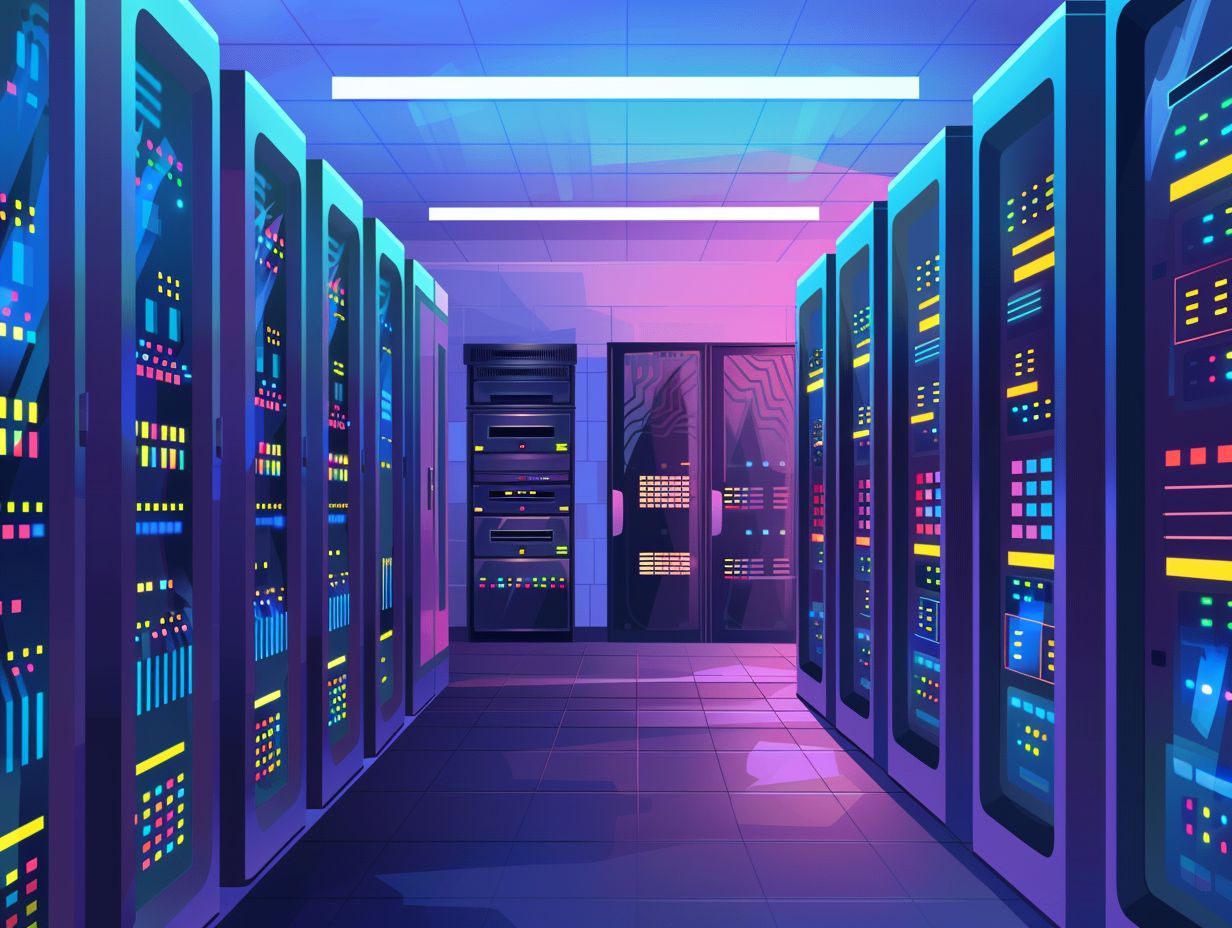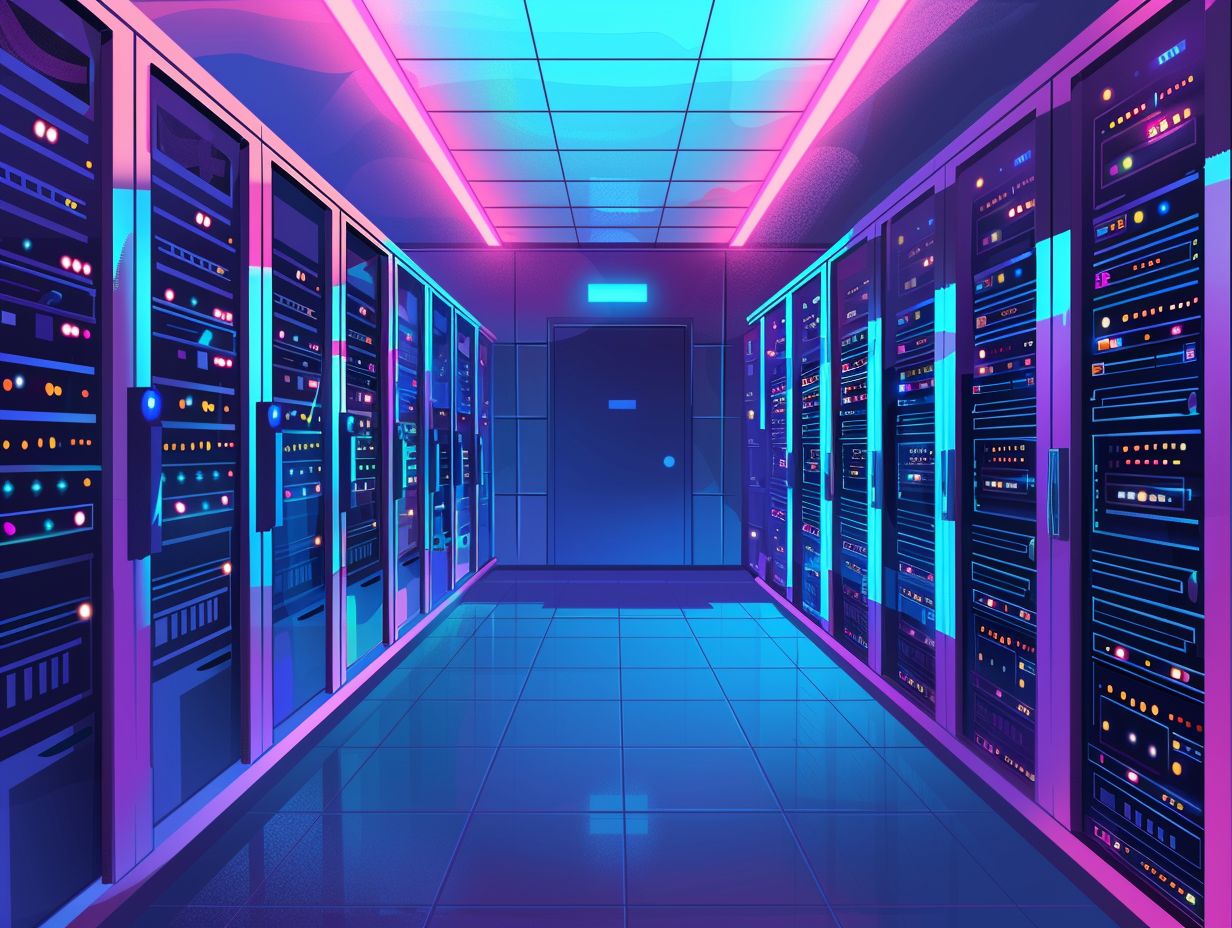Data centers are the heart of any organization, housing critical data and applications that keep businesses running smoothly. In today’s digital landscape, securing these data centers is more important than ever.
You should explore the importance of securing Cisco data center infrastructure, potential risks and consequences of not doing so, best practices for implementation, and tools and technologies available for enhancing security.
Additionally, the significance of training and education to ensure employee awareness and compliance will be discussed. It is crucial to learn more about safeguarding your data center infrastructure.
Key Takeaways:

Overview of Cisco Data Center Solutions
You are offered a comprehensive range of data center solutions by Cisco that are specifically designed to address the evolving needs of businesses in effectively managing their critical data and applications. These solutions encompass a diverse set of technologies and services that are aimed at optimizing data center performance, enhancing security measures, and ensuring scalability.
One of the key features of Cisco’s data center solutions is their strong emphasis on automation, providing businesses with the ability to streamline operations and minimize manual intervention. Through the implementation of Cisco’s solutions, businesses can enjoy simplified management processes with centralized control and enhanced visibility across their data center infrastructure. Cisco’s solutions also offer advanced analytics capabilities that facilitate proactive monitoring and predictive insights, enabling businesses to optimize resource utilization and mitigate any potential issues before they impact operational efficiency.
In today’s rapidly changing business environment, Cisco’s data center solutions play a critical role in ensuring agility, efficiency, and competitiveness for organizations.
Importance of Securing Data Center Infrastructure
Securing your data center infrastructure is imperative in today’s digital landscape to safeguard sensitive data, applications, and network resources from potential threats, attacks, and vulnerabilities. A strong security framework guarantees the confidentiality, integrity, and availability of critical business assets.
Potential Risks and Consequences
Data centers must be prepared to address a range of risks, including cyber threats and potential data breaches that could lead to financial losses, reputational harm, and legal liabilities. Understanding these risks is essential for implementing effective security measures.
The susceptibility of data centers to these risks can be influenced by various factors, such as outdated security protocols, human error, and insider threats. The consequences of these vulnerabilities extend beyond financial losses, encompassing the costs of data recovery and regulatory fines, as well as potential damage to customer trust and reputation. In case of a data breach, businesses may also face legal repercussions for failing to adequately safeguard sensitive information, underscoring the critical need for robust cybersecurity practices.
Best Practices for Securing Cisco Data Center Infrastructure

Utilizing best practices for securing Cisco data center infrastructure is imperative for mitigating risks and protecting essential assets. By adhering to industry standards and utilizing state-of-the-art technologies, organizations can establish a strong security posture that aligns with their business objectives.
Implementing Strong Access Controls
Implementing robust access controls within your Cisco data center infrastructure is essential for regulating user permissions, restricting unauthorized access, and mitigating potential security risks. By establishing detailed access policies and leveraging authentication mechanisms, your organization can establish a secure and controlled environment.
The implementation of strong access controls is crucial for preserving the confidentiality of sensitive data stored within the designing and implementing Cisco data center networks. User permissions are key in determining the access levels granted to individuals, thereby preventing unauthorized use of critical information.
Access policies define the specific regulations and limitations that govern resource accessibility, providing a systematic approach to data access management. Incorporating authentication methods like multi-factor authentication enhances security by verifying user identities prior to granting access.
These measures collectively enhance the overall security stance of your data center, fortifying defenses against potential cyber threats.
Regular Monitoring and Updating
To maintain a strong security posture and identify potential vulnerabilities or anomalies, it is crucial for you to regularly monitor and update your data center infrastructure. By consistently monitoring network traffic, software updates, and system configurations, your organization can proactively manage security incidents.
This continuous monitoring process ensures that any new cyber threats or vulnerabilities are promptly recognized and addressed, reducing the likelihood of data breaches or system disruptions. Real-time threat detection tools are essential for detecting malicious activities as they happen, enabling immediate response actions to be taken.
To remediate known vulnerabilities and enhance overall defense mechanisms against evolving cyber threats, it is important to deploy software patches and perform regular system upgrades in a timely manner.
Tools and Technologies for Securing Cisco Data Center Infrastructure
Utilizing advanced tools and technologies is essential for enhancing the security posture of your Cisco data center infrastructure. From firewalls and intrusion detection systems to encryption and authentication mechanisms, these solutions provide comprehensive protection against cyber threats.
Firewalls and Intrusion Detection Systems

Firewalls and intrusion detection systems are essential components in safeguarding data center networks. They monitor incoming and outgoing traffic, identify potential threats, and enforce access controls, serving as the primary defense against cyber attacks.
Firewalls create a boundary between an organization’s internal network and external networks. They allow for selective blocking of unauthorized access while permitting legitimate traffic. In contrast, intrusion detection systems scrutinize network traffic for suspicious activities or policy violations and alert system administrators upon detecting potential threats.
Through continuous monitoring and analysis, firewalls and intrusion detection systems collaboratively protect data centers from malicious activities, ensuring the security and integrity of valuable information stored within the network infrastructure.
Encryption and Authentication
Incorporating encryption and authentication mechanisms into your data center security strategy is crucial for safeguarding sensitive information against unauthorized access or interception. Encrypting data in transit and at rest is imperative for ensuring the confidentiality and integrity of your data.
Encryption protocols such as AES and RSA are instrumental in enhancing data security by transforming data into unreadable formats that can only be decoded with the correct decryption key. Implementing secure authentication methods like multi-factor authentication and biometric verification adds an additional layer of security by validating users’ identities before granting access to critical systems and data.
To further bolster data security, employing data protection mechanisms like access control and encryption key management is essential. These mechanisms help restrict unauthorized users from accessing data and ensure that encryption keys are stored and managed securely.
Training and Education for Data Center Security
Training and education are essential components in improving data center security. They ensure that administrators and staff possess the requisite knowledge and skills to effectively manage risks. Organizations can enhance their security posture by fostering awareness and adherence to security policies.
Ensuring Employee Awareness and Compliance
Ensuring employee awareness and compliance with data center security policies and procedures is essential for maintaining a secure operational environment. By providing regular training sessions, security updates, and compliance checks, organizations can cultivate a culture of security consciousness.
This proactive approach helps employees grasp the significance of protecting sensitive data, identifying potential security threats, and adhering to established protocols. Ongoing training not only provides employees with the knowledge and skills to recognize and address security risks but also enables them to actively contribute to the organization’s overall security posture.
Stringent policy enforcement guarantees that everyone adheres to best practices and compliance standards, reducing the risks of data breaches and unauthorized access. Routine compliance audits further underscore the commitment to upholding a secure data center environment, fostering a sense of accountability and responsibility among employees.
Frequently Asked Questions

What is the purpose of securing Cisco Data Center Infrastructure?
The purpose of securing Cisco Data Center Infrastructure is to protect critical data and resources from unauthorized access, theft, or damage. It also ensures the availability and integrity of the infrastructure, preventing any disruptions or downtime.
What are some common threats to Cisco Data Center Infrastructure?
Some common threats to Cisco Data Center Infrastructure include cyber attacks, physical attacks, insider threats, and natural disasters. These can result in data breaches, service disruptions, and financial losses.
How does Cisco Data Center Infrastructure protect against cyber attacks?
Cisco Data Center Infrastructure utilizes a range of security measures, including firewalls, intrusion prevention systems, malware detection, and encryption, to protect against cyber attacks. It also employs regular vulnerability assessments and patch management to address any potential vulnerabilities.
What is the role of access control in securing Cisco Data Center Infrastructure?
Access control is a crucial aspect of securing Cisco Data Center Infrastructure. It ensures that only authorized individuals have access to sensitive data and resources, preventing unauthorized access and potential data breaches. This can be achieved through various methods such as role-based access control, multifactor authentication, and network segmentation.
Can securing Cisco Data Center Infrastructure be automated?
Yes, securing Cisco Data Center Infrastructure can be automated through tools and solutions such as Cisco’s Software-Defined Access (SD-Access) and DNA Center. These solutions use intelligent automation and policy-based controls to secure the infrastructure and streamline security management.
What steps can I take to ensure the security of my Cisco Data Center Infrastructure?
To ensure the security of your Cisco Data Center Infrastructure, you can follow best practices such as regularly updating software and firmware, implementing strong access control measures, conducting regular security audits, and providing comprehensive employee training on security protocols. It is also crucial to stay informed about the latest security threats and continually assess and improve your security measures.
